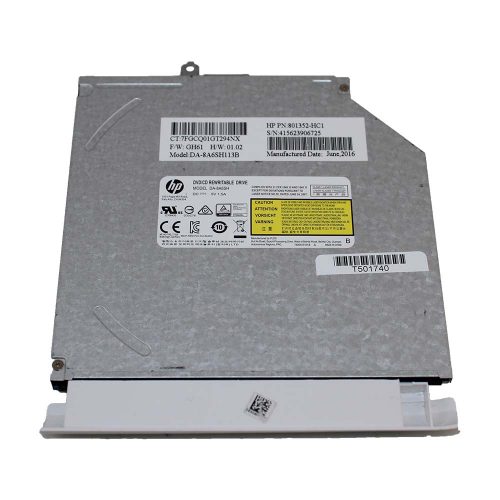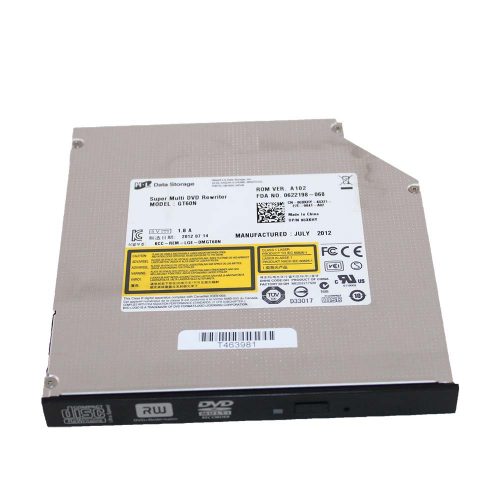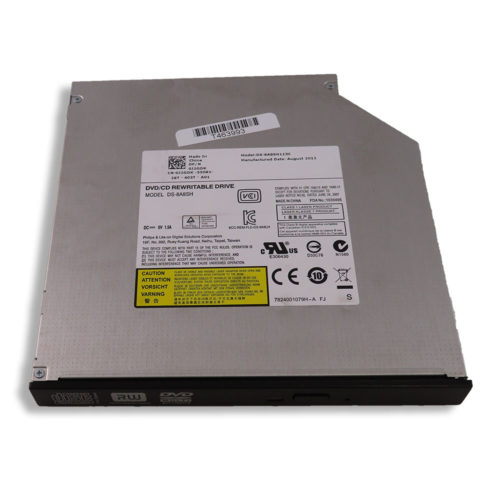OPTICAL
Welcome to the optical drive section of our store where you will find our selection of optical drives for PCs and laptops. We have new and refurbished CD and DVD drives for sale.
Frequently Asked Questions
What types of discs are available?
When choosing an optical drive for pcs or laptops it is important to consider what sort of media it will play. There is generally 3 type of discs available-
CDs – The first widely use optical drive type, it can be used to store music, software and other files.
DVDs – DVDs offer a larger storage capacity than CDs. As well as software they often used for movies. DVD drives generally are backward compatible with CDs and can read and (in the case of writers) write data to them, so if you need to play both it is worth checking DVD drives for sale.
Blu-ray- Blu-ray discs offer a much higher capacity that DVDs and as such as often used to store high-definition movies or larger amounts of data.
Should I buy an internal or external optical drive?
The first thing to consider is whether an internal optical drive would even be an option. Many new laptops no longer include a DVD or CD drive in which case an external optical drive may be the only option. In the case of desktops check both that the case has space for a CD DVD drive and that you the correct power and data connectors.
External optical drives offer increased portability and can of course be used on multiple machines.
What is a CD/DVD writer?
CD/DVD writer drives can both read and write data to CDs and/or DVDs, allowing the user to record data and save files onto black discs.
What are Lightscribe drives?
Lightscribe drives can burn text and images onto the surface of a supported CD or DVD using a laser to create a label for the disk. In order to use this feature you need a Lightscribe optical drive, disc and software.
Should I buy a new or refurbished CD DVD drive?
A new optical drive, whilst more expensive, is likely to have a longer lifespan and come with a manufacturer’s warranty. This could be the most important factor if you are using these drives in a mission critical environment, such as for reliably backing up data.
Refurbished optical drives are likely to be cheaper but may offer less reliability and are unlikely to be under a long warranty.
Another factor to consider is availability. As DVD and CD drives become less widely used the number being manufactured drops. Whilst a USB DVD drive will still be commonplace trying to find a specific laptop CD drive may be more difficult.
How can I identify what optical drive I need for my machine?
If you are replacing an existing part e.g. a laptop CD drive, the easiest way to find a like for like replacement is by the part number. On both external or internal drives this is normally located on the top. This might be a Lenovo or Dell part number or a manufacturer’s model number. For more information on identifying part numbers please see this guide here.
If you do not have the optical drive physically to hand the next place to check is the documentation for the machine. This can include paper or online manuals and any other information provided.
Lastly you can attempt to match compatible drives from their specifications. In the case of internal optical drives will include the connector type and form factor as well as whether the technology offered by the drive such as LightScribe is supported by your machine. You will probably want to make sure the performance of the CD/DVD Drive at least matches the one that was previously in the machine.
For external optical drives you will need to check whether the interface and connector it uses e.g. USB is present on your machine and that it is supported by the machine and operating system.
What kind of connectors do optical drives normally use?
Optical drives use a range of connectors and interfaces. It important to match what you have available on your machine to what is on the drive you are potentially buying
SATA – SATA comprises of 2 flat black connectors, one for data and one for power. Most internal CD and DVD drives for sale will use this connector.
IDE – Now relatively rare, the IDE connector will normally be found on older desktop and laptop CD drives. Newer systems will generally use SATA.
USB- External optical drives will often connect via a USB connector. Newer USB standards will offer faster data transfer rates and many optical drives using this standard will be plug and play for easy connectivity.
How can I tell if my optical drive needs replacing?
Signs that a PC optical drive may be failing include:
- Trouble reading disks. You may see read errors regarding the optical drive on your PC or it may fail to see the CD/DVD at all. This can also be caused by problems with the CD/DVD itself being scratched, dirty or otherwise damaged so it is worth checking with other disks.
- Slow/inconsistent read and write speeds. The optical drive may still work however read and write speeds may either be uniformly slow or inconsistent.
- Clicking or other unusual noises. This may be an indication of mechanical issues with the moving parts within the drive.
- Drive not being seen. The PC’s operating system may not see the optical drive, this can happen with an internal or external drive if it is faulty. If it is an external USB DVD drive it is worth trying with a different cable or different machine to see if this resolves the problem.
How can I open an optical drive that doesn’t have power?
Often a paperclip can be used to open CD DVD drives. Straighten out the paperclip and look for a small pinhole on the front of the optical drive. Push the end of the paperclip into this hole until the drive ejects.




